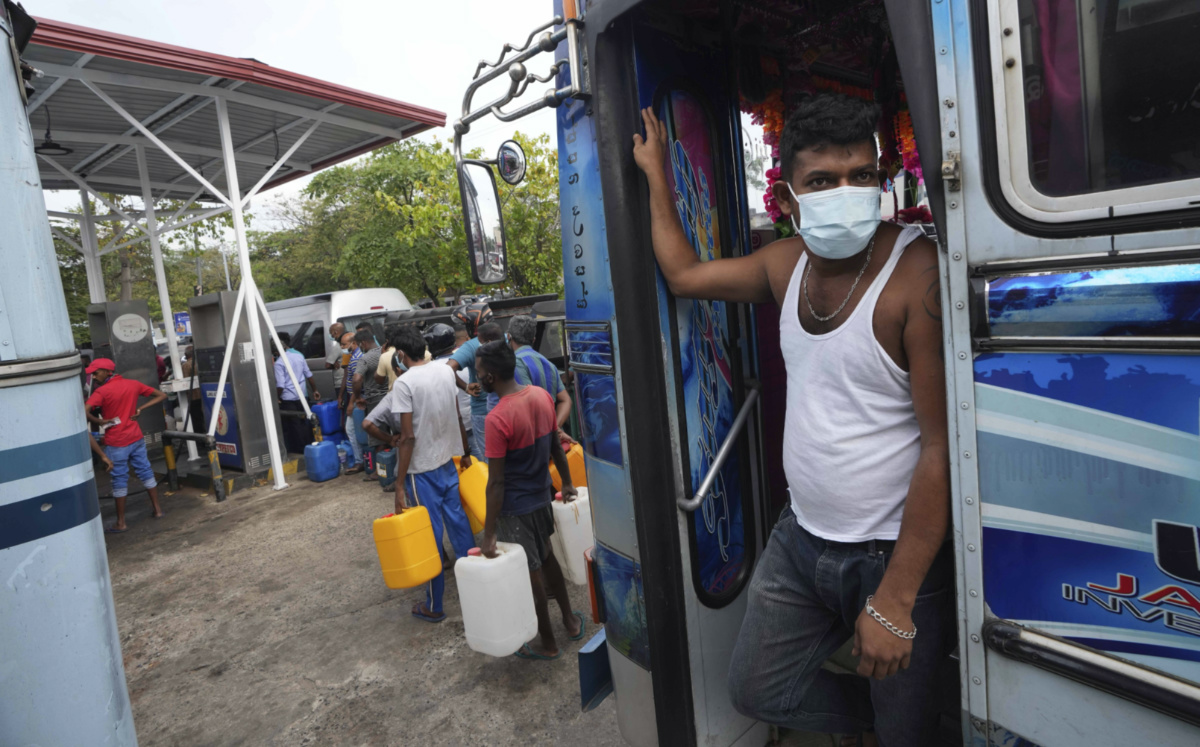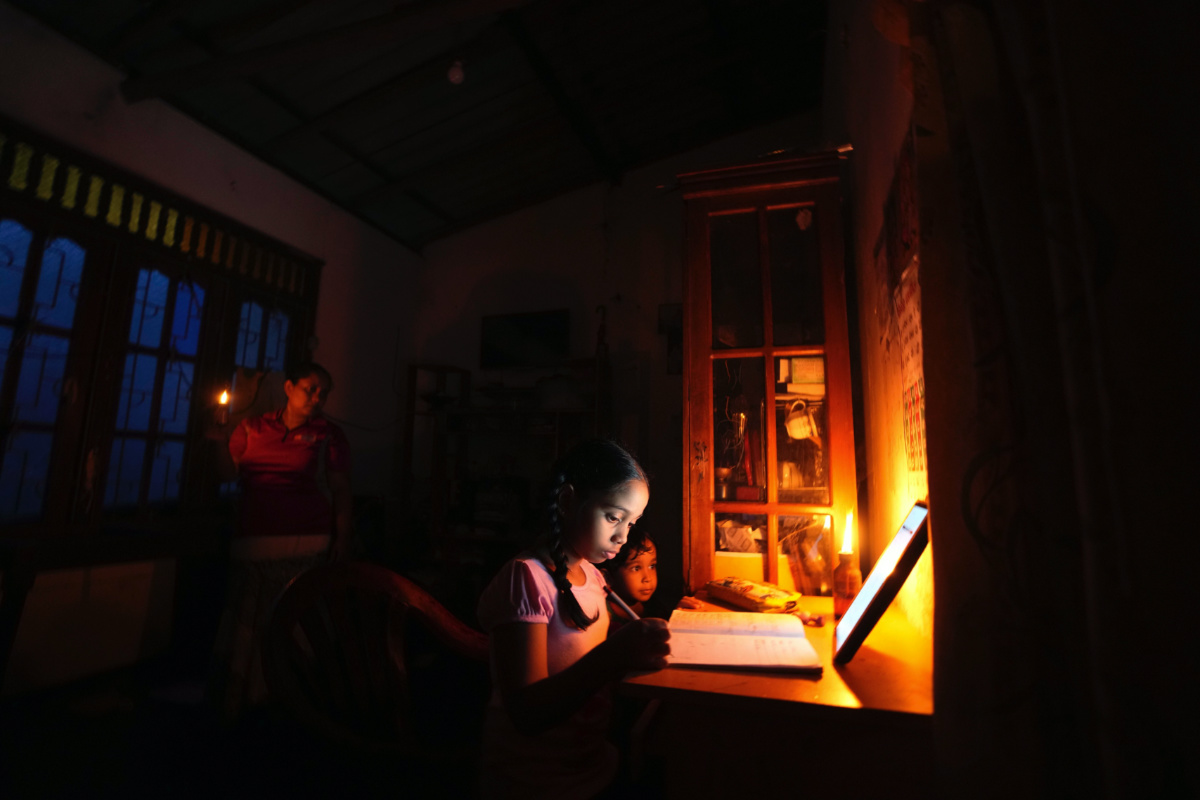Colombo, Sri Lanka
AP
Sri Lanka police fired tear gas and a water canon to disperse several hundred people protesting Thursday near the private residence of the country’s President, demanding his resignation as the Indian Ocean island nation struggles with its worst economic crisis.
Protestors demonstrated, shouting slogans condemning the long power cuts and shortages of essentials, along the roads leading to President Gotabaya Rajapaksa’s private residence at Mirihana, on the outskirts of the capital Colombo.
Demonstrators demanded Rajapaksa to step down, with shouting slogans “Go home, Gota go home.” They also set fire to a bus halted by police as a shield to prevent the protestors entering the road leading to Rajapaksa’s residence.
Amal Edirimanne, a senior superintendent of police, said a curfew had been imposed in four police divisions of Colombo, the country’s commercial capital.

A bus worker and others wait to buy fuel at a fuel pump in Colombo, Sri Lanka, on Wednesday, 2nd March. Sri Lanka’s Catholic bishops on Thursday, 31st March, called for unity among the country’s politicians, warning that the South Asian island nation is fast becoming a failed state amid its most severe economic crisis in memory. PICTURE: AP Photo/Eranga Jayawardena/File photo.
A foreign exchange crunch in Sri Lanka has led to a shortage of essential goods such as fuel and cooking gas, and power cuts now last up to 13 hours a day.
One of the protestors Dulaj Madhushan, 30, lamented over the 13-hour power cut and asked: “How can people earn a living?”
“This is not a political one, but a protest led by people. They took people for granted. Now you can see peoples’ power,” he said.
Another Asanka Dharmasinghe, 40-year old carpenter said he has been running a carpenter shed, employing four people and paying them LKR 3500 ($US12) each per day.
“I spent LKR 14,000 ($US48) on salaries every day, but how much I can earn for a day? My daughter is sitting for exams, but there is no paper,” he said.
Sri Lanka’s foreign reserves are dwindling at a time when it faces huge debt obligations. The country’s struggle to pay for imports has caused shortages of medicine, fuel, milk powder, cooking gas and other essentials, with people waiting in long queues to get fuel.
Residents are enduring daily power cuts due to a shortage of fuel to operate the generating plants and dry weather has sapped hydropower capacity.
Sri Lanka’s economic woes are blamed on successive governments not diversifying exports and relying on traditional cash sources like tea, garments and tourism, and on a culture of consuming imported goods.
The COVID-19 pandemic dealt a heavy blow to Sri Lanka’s economy, with the government estimating a loss of $US14 billion in the last two years.
Sri Lanka also has a severe foreign debt problem after borrowing heavily on projects that don’t earn money. Its foreign debt repayment obligations are around $US7 billion for this year alone.
According to the Central Bank, inflation rose to 17.5 per cent in February from 16.8 per cent a month earlier. The numbers are expected to rise even further in the coming months because the government has allowed the local currency to float freely, resulting in higher prices for fuel and other goods.

A girl uses a kerosine oil lamp to attend online lessons during a power cut in Colombo, Sri Lanka, on Friday, 4th March. PICTURE: AP Photo/Eranga Jayawardena/File photo.
Separately on Thursday, the country’s Catholic bishops called for unity among the country’s politicians, warning that the island is fast becoming a failed state amid its most severe economic crisis in memory.
“All successive governments to date are responsible in varying degree for the present state of affairs,” the Catholic Bishops’ Conference in Sri Lanka said in a statement, adding that “the present government as well as those in the opposition…must adopt a conciliatory not a confrontational approach” and they should not “play the blame game.”
“The country is fast approaching the precipice of a failed state that will in its wake inflict irreversible injuries on the people,” the statement added.
The bishops called on Catholic institutions and individuals to provide assistance to the most affected groups.
Roman Catholics comprise about six per cent of Sri Lanka’s 22 million people, while the majority Buddhist Sinhalese make up more than 70 per cent. Though small in numbers, the church has traditionally been active and vocal in social issues as well as in education, welfare and the arts. Church officials are generally influential and respected by the country’s leaders, who are mostly Buddhists.
– With reporting by Reuters.






